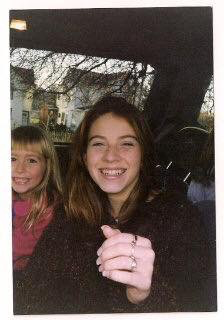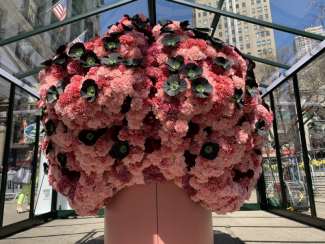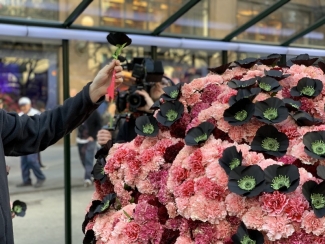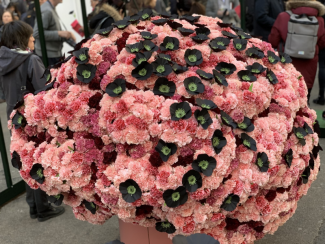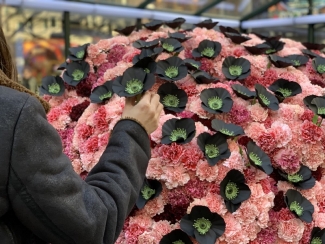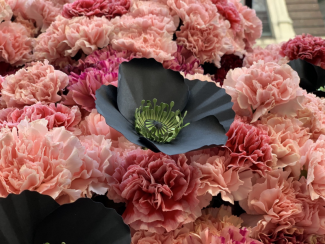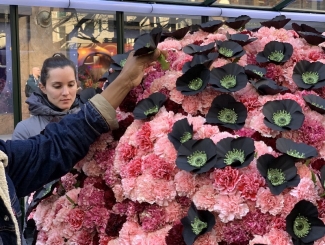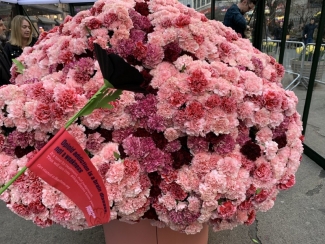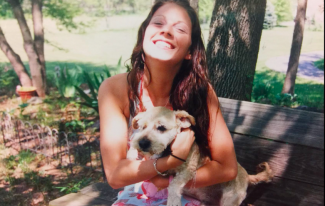
See the Human Before the Disease
It was around 7 PM on a school night when my parents asked my sister Megan and me to join them in the dining room for a chat. It was 2004 and a Disney Channel Original Movie was about to air. I needed mom and dad to make this meeting quick — Zenon: Girl of the 21st Century was listed in the TV Guide.
“Your sister Angela is sick, and she has to go away for a few weeks to get better.”
I was ten-years-old at the time, and the logic of that sentence made sense.
Okay, great. So, let’s debrief.
1. My sister is sick
2. She is going somewhere to get better
Anything else? Seems like a pretty typical series of events here.
Sure, someone doesn’t typically need to “go away” for a few weeks when they’re ill, I knew that. But, my sister was sick, and it was going to make her better.
“Do you have any questions?”
No — Zenon is on in five.
“I don’t think so,” I said, confused about why we just had a family meeting for what sounded like my sister having a severe common cold.
By the last time Angela went away to get better, I’d learned it meant she was going to a treatment facility for opioid use disorder. I got to visit her that time. We played basketball in the parking lot, while our distressed, tired mom held it all together, quietly asking Angela questions they didn’t want me to hear.
What’s the big deal? I remember thinking this to myself. Angela is fine. We’re playing basketball. Look at her — she’s fine. Why is mom so upset?
To me, Angela’s disease was just a word that I heard at home a lot. Addiction. She was still my big sister, and I was still her goober.
Terms like addict, heroin, and addiction became familiar. Those terms weren’t spoken with a negative tone in our home, but they were used to describe Angela and the opioid use disorder community. And, they were expressed by mom and dad with an indescribable, raw hopelessness. They were losing their daughter, and there came a time when there was nothing they could do about it.
My parents sat down with me in 2016, and explained what was really happening when Angela battled opioid use disorder:
As a family member of someone struggling with opioid use disorder, I remember feeling like I wasn’t allowed to talk about it for a few reasons. I didn’t quite understand it, and no one else was talking about it outside of my family. Discussion of Angela’s disease was reserved for the dinner table, and just wasn’t brought up in other, more public spaces. In a small, West Virginia town, we didn’t have to talk about it in public for everyone to know: Angela Camilletti is not okay.
Everyone knew Angela was struggling; whether I knew it or not, we were all struggling through a chaos that had become our normal. Looking back, our family was a live-action shit show, and I had become inured to the constant upheaval and worry.
In the last few months we had with Angela, she seemed brighter than usual. She smiled constantly and laughed often. We went on ice cream dates several times a week, and stole each other's clothes. We fought over the remote control and met for breakfast at Betty’s on Saturday mornings. Everything finally felt less chaotic.
I’m lucky to have had that time with her. When she unexpectedly disappeared from my life on July 1, 2009, my reality finally aligned with what my parents and Megan had been experiencing all along.
~~~
I didn’t really know you could die from opioid use disorder until Angela did. I was 15, and still believed that she was just sick, and would get better. I began to notice when other people used the term addict, they didn’t typically have that hopeless — but not disparaging — tone I was used to. It was more unforgiving. It was judgmental. I like to believe that when people speak in such a way, they too have trouble understanding opioid use disorder. Shatterproof is trying to change that.
Shatterproof is a non-profit organization dedicated to ending the devastation addiction causes families. It is a phenomenal resource center for individuals and families struggling with substance use disorder, providing access to addiction education, prevention, treatment, and recovery support.
Shatterproof is fiercely advocating for individuals with substance use disorder and all folks who are affected by the epidemic. This organization recognizes the need for medical research in the substance use disorder community and is dedicated to advancing access to science-based treatment.
In April, Shatterproof launched a campaign to bring awareness to opioid use disorder called Hope Stems.
The pink, live flowers represent a healthy brain, and the poppies signify opioids. On the last day of the installation, the public was invited to remove the poppies to honor treatment and recovery from opioid use disorder.
The entire healthy brain was revealed after hundreds of people removed a poppy, and each one had an important message attached.
“Opioid addiction is a brain disease, not a weakness. It’s time for treatment, not judgment. This will save lives. #HopeStems from you.”
Individuals experiencing substance use disorder often don’t feel worthy of attempting treatment due to the overwhelming stigma associated with their disease. Hope Stems is a reminder that a person deserves the ability to seek treatment and recovery, no matter who they are or what their circumstances may be.
My sister taught me to see the human before the disease. She taught me that substance use disorder does not define the love and purpose someone can have in your life.
Addiction shouldn’t be acknowledged as an unforgivable disease. It should matter to all of us. We can work as a larger community to make the shift from hopelessness to hope for people experiencing substance use disorder.
Lena Camilletti is pursuing an M.A. in Social Journalism at the Newmark J School at CUNY.
Orginially published on Medium. Republished with permission.

